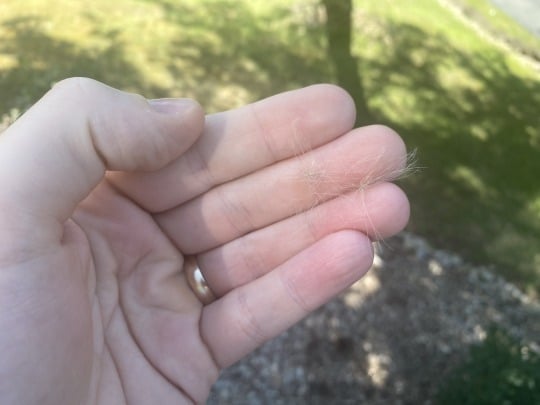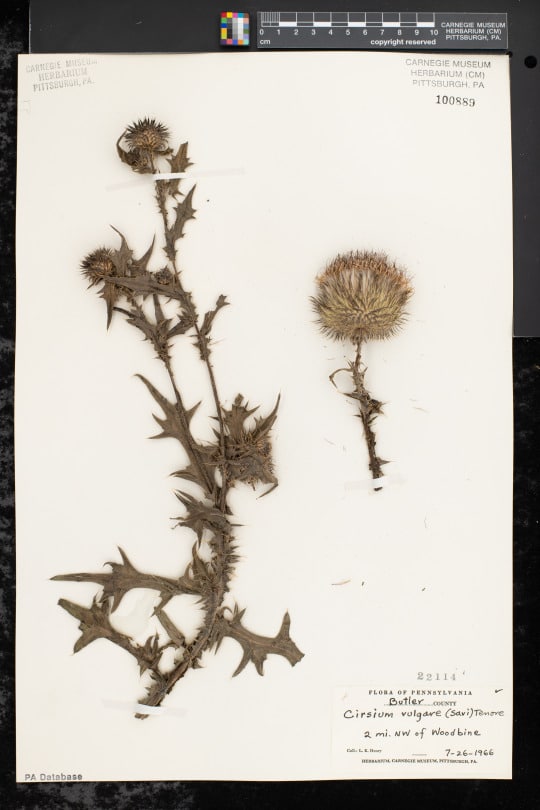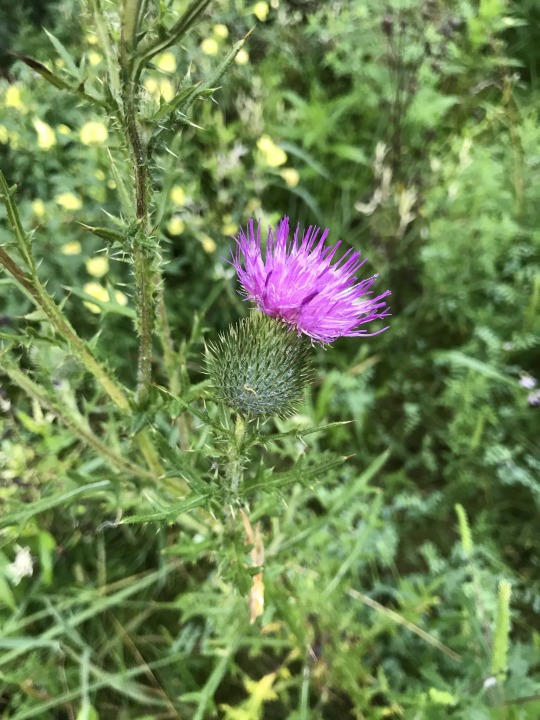Christmas in July…”Santa Claus” floating in the air.
(Or I guess, technically Boxing Day in July, if that’s a thing.)

Make a wish!
Have you ever seen fluff floating by in the air, especially in late July, early August? Kids love chasing the fluff around, often referring to them as “Santas” or “Santa Clauses.” You catch it, make a wish, and let them go again, floating away.

These are seeds! Most likely thistle seeds, like this specimen here. Or other seeds that have similar “fluff”-like structures. The botanical term for this “fluff” is pappus. Pappus is a modified part of flowers in many species in the sunflower family, Asteraceae (think dandelion). These structures help the seed disperse in the wind, floating away in the breeze, carrying the seed far away. If you’ve tried to catch them, you know they float away in the air very easily. The seeds are small, and often times have already disconnected from the pappus when you catch them.

Check out the “Santa Claus” pappus on this specimen of bull thistle (Cirsium vulgare), collected on July 26, 1966 by Leroy Henry near Woodbine (Butler county), Pennsylvania. Leroy Henry was a botany curator at the Carnegie Museum. All species in the genus Cirsium are known as “thistles.” They have distinctive spiny leaves and stems, with even more distinctive purple flower heads. There are native thistles, but many are introduced. Thistles are common in disturbed areas, and in and around agricultural fields across the country. Bull thistle is native in Europe and Western Asia, but widely introduced across the world, including North America. It is the national flower of Scotland, but the species is considered invasive in many places.
Keep an eye out for thistles, and “Santa Clauses.” Don’t forget to make a wish.
Find this bull thistle specimens here.
Check back for more! Botanists at the Carnegie Museum of Natural History share digital specimens from the herbarium on dates they were collected. They are in the midst of a three-year project to digitize nearly 190,000 plant specimens collected in the region, making images and other data publicly available online. This effort is part of the Mid-Atlantic Megalopolis Project (mamdigitization.org), a network of thirteen herbaria spanning the densely populated urban corridor from Washington, D.C. to New York City to achieve a greater understanding of our urban areas, including the unique industrial and environmental history of the greater Pittsburgh region. This project is made possible by the National Science Foundation under grant no. 1801022.
Mason Heberling is Assistant Curator of Botany at Carnegie Museum of Natural History. Museum employees are encouraged to blog about their unique experiences and knowledge gained from working at the museum.
